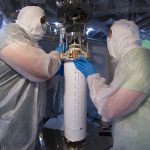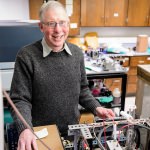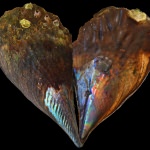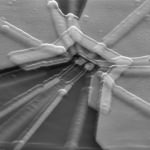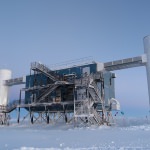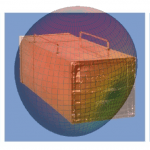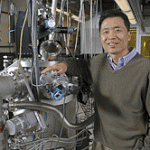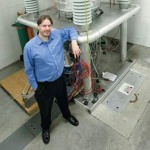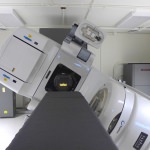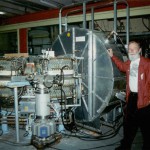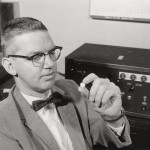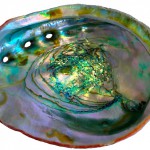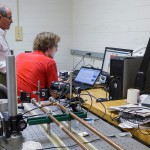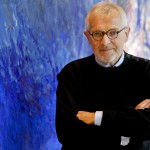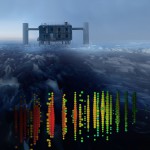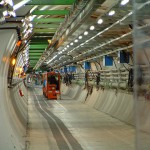Tag Physics
Fox Racing’s founder got his start motorbiking at UW
UW grads Geoff and Josie Fox combined backgrounds in physics and art history, an appreciation for adventure, and a willingness to change course to gain incredible traction in the action sports industry.
UW-Madison astrophysics innovator Lawler wins national award
James Lawler is a professor of physics known for devising techniques to measure the chemical elements in the sun and other stars.
Ocean temperatures faithfully recorded in mother-of-pearl
Mother-of-pearl or nacre (pronounced nay-ker), the lustrous, tough-as-nails biomineral that lines some seashells, has been shown to be a faithful record of ancient ocean temperature.
UW-Madison spinoff receives construction permit for medical isotope plant in Janesville
This is the first time since 1961 that the NRC has issued a permit for a facility to make the life-saving isotopes.
UW-Madison storage ring designated as historic site
The world's first dedicated source of synchrotron radiation, an electron storage ring named Tantalus, has been designated an historic site by the American Physical Society.
Computer innovator, UW–Madison alumnus Amdahl dies
University of Wisconsin–Madison alumnus Gene Amdahl (M.S.’49, Physics; Ph.D.’52, Mathematics and Physics), a pioneer in computer science, died earlier this week in Palo Alto, Calif., at the age of 92.
Medical physics publisher marks 30 years of success
A small Madison publisher focused on the use of radiation in medicine has just celebrated 30 years in business. Medical Physics Publishing focuses on technology used to diagnose and evaluate disability and disease - X-ray, CT, MRI, PET and ultrasound - and on radiation treatment for cancer.
Mother-of-pearl’s genesis identified in mineral’s transformation
How nature makes its biominerals - things like teeth, bone and seashells - is a playbook scientists have long been trying to read.
‘Garage Physics’ is a makerspace for undergraduate brainstorms
To physics professor Duncan Carlsmith, a student's proposal to make a four-rotor helicopter drone was fine fodder for what he calls "garage physics." But why stop at a quadcopter, he told the University of Wisconsin–Madison undergraduate. Make one that is mind-controlled, so a person with severe movement impairment could think: "Go open the fridge and show me what's inside," and that would actually happen.
Balzan Prize goes to UW neutrino pioneer
Francis Halzen, the University of Wisconsin–Madison physicist and leader of the giant neutrino telescope known as IceCube, has been named winner of a 2015 Balzan Prize.
New data from Antarctic detector firms up cosmic neutrino sighting
Researchers using the IceCube Neutrino Observatory have sorted through the billions of subatomic particles that zip through its frozen cubic-kilometer-sized detector each year to gather powerful new evidence in support of 2013 observations confirming the existence of cosmic neutrinos.
As giant physics machine restarts, essential role for UW continues
University of Wisconsin–Madison takes pride in the process of "sifting and winnowing, by which alone the truth can be found." So it makes poetic sense, says Wesley Smith, that he, as a UW–Madison physicist, is overseeing the ultrafast sifting and winnowing procedure for the CMS (compact muon solenoid) experiment, one of two general purpose detectors at history's largest scientific project, the Large Hadron Collider.



